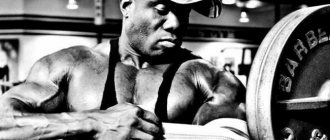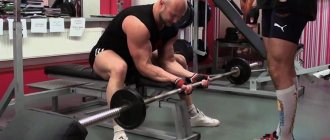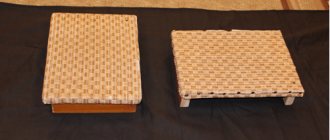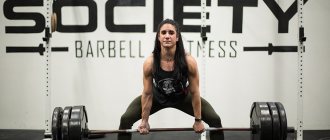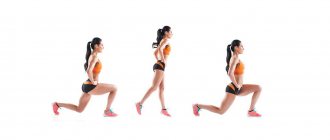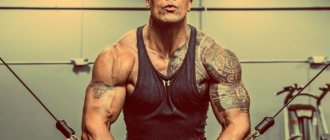One of the main basic exercises in bodybuilding is the deadlift, the purpose of which is to form the back frame and increase strength indicators.
It is indispensable during periods of strength cycles. Its effectiveness is undeniable: all major muscle masses are involved, which stimulates the growth of muscle mass.
Article on the topic: “How to increase the number of push-ups”
It can be used for general development and as a specialized exercise for the back. Not all bodybuilders, especially beginners, manage to perform it correctly without some experience and appropriate physical training.
However, there are situations when its implementation is impossible for various reasons, and then the question arises: what to replace the deadlift with and what exercise will be adequate for it in terms of effectiveness.
True, experts believe that it is almost impossible to provide a full replacement, but exercises of a more gentle nature can give a good effect.
Article on the topic: “How to consume protein”
How to replace deadlifts, best replacement exercises
One of the main basic exercises in bodybuilding is the deadlift, the purpose of which is to form the back frame and increase strength indicators.
It is indispensable during periods of strength cycles. Its effectiveness is undeniable: all major muscle masses are involved, which stimulates the growth of muscle mass.
Article on the topic: “How to increase the number of push-ups”
However, there are situations when its implementation is impossible for various reasons, and then the question arises: what to replace the deadlift with and what exercise will be adequate for it in terms of effectiveness.
True, experts believe that it is almost impossible to provide a full replacement, but exercises of a more gentle nature can give a good effect.
Article on the topic: “How to consume protein”
Why do you have to replace deadlifts?
The deadlift is quite traumatic, so there are several good reasons to look for a replacement:
- injuries, primarily in the lumbar spine (due to hernia, muscle strain, etc.);
- weak back, which prevents full load on the spine;
- insufficient experience of the athlete in working with serious weights;
- poor command of technique;
- individual constitutional characteristics that prevent the full performance of deadlifts (very tall height, long torso).
The main load falls on the spine, as well as on the hip and knee joints, and if they are injured, it is necessary to remove the load from them.
Article on the topic: “What is creatine for?”
How can you replace deadlifts?
At home, similar workouts with dumbbells are suitable to practice the technique. In addition, it is useful to perform isolated exercises for the muscle groups involved: for the back, these are hyperextensions and rows with emphasis on the chest.
Article on the topic: “How to take Tribulus”
For leg muscles – flexion/extension and presses. Only after stable mastery of the technique can you gradually increase weights.
- In case of a back injury with axial load prohibited: isolated exercises should be selected for the muscle groups being trained. The best options are horizontal block or T-bar rows, as well as hyperextensions.
- For injuries to the knee and/or hip joints: perform this exercise with straight legs; leg presses; their flexion/extension while sitting/lying down, and in exercise machines – bringing the legs together/extending them.
- In case of individual constitutional characteristics: a replacement, although not completely adequate, would be straight leg deadlift or Romanian deadlift.
The deadlift is a very difficult exercise in every sense; it involves the largest muscle groups, which causes a huge expenditure of energy, but at the same time it also powerfully stimulates the production of testosterone and growth hormone in the body.
That is why the question of what to replace the deadlift with when it is impossible to fully perform it is so relevant.
Article on the topic: “Arachidonic acid”
The best sports nutrition for mass gain Tribulus (tribulus) Agmatine Sulfate L-Arginine (argenine) Creatine (creatine) Glutamine (glutamin)
This is interesting: Gaining high-quality muscle mass - nutrition and training, how to eat and train so as to always be in shape
When craving is not an option
In situations where an athlete or coach wants to replace the Romanian deadlift with something due to lower back or spinal pain, fatigue or a desire to diversify the training program, the following exercises can be used: Good morning. This is a good alternative exercise to enhance the development of the lower back and glutes while limiting the stress on the hamstrings, which are less involved.
Most often performed with a barbell or expander. Reverse hyperextensions are a very good exercise for working the buttocks and muscles that straighten the spine (its lower part), without loading the back of the thigh. The fact is that the movement occurs in the hip joint, and not in the knee or ankle.
Can be done with weights, on a reverse hyperextension machine, or simply with your own body weight. Glute ham raises are used to work the hamstring muscles in isolation with minimal stress on the spine. Suitable for people who want to protect their back due to injuries or too intense stress.
Mostly performed with your own weight or a small weight pressed to the chest. Done with a high number of repetitions. Scandinavian hamstring curls. Very similar to the previous exercise. The same muscles are loaded. Performed with the help of a partner, and, as a rule, done only with your own weight.
Good luck!
Typically, people who cannot deadlift have poor hip mobility. How do you know if their limited mobility is affecting you? If you cannot maintain a straight back at the bottom of your range of motion, you likely have poor hip mobility to perform a conventional deadlift through the full range of motion.
Although most people often try to break through a lifting barricade, in this case it is better not to break through the gap, but to maneuver around it. You can overcome the obstacle by limiting your range of motion and/or choosing heavy deadlift exercises that don't hit your back and body as intensely as a classic deadlift.
What you need to know about the deadlift
I’ll say right away that the deadlift is my favorite exercise, however, I do not deny that it is one of the most risky and may well cause injury, for example, a herniated disc. However, if you dream of building a new and strong body, then after some preparation it is the deadlift that will help you achieve your goal.
Not everyone can afford to do deadlifts, and this is the main feature of the exercise. Only athletes with a truly strong muscle corset can treat themselves to such luxury. If there are problems with the corset, then even perfectly correct technique and relatively light weights will lead to injury. Having a strong muscle corset, even athletes who do not observe the subtleties of technical performance, working with exorbitant weights, will not get injured, and this says a lot. Before you start working on deadlifts, you need to take care of pumping up your back and not vice versa.
Safe, correct deadlift technique involves squeezing your shoulder blades together and pulling your head back. With a competitive opposite squat, you need to release your shoulders and shoulder blades, but do not slouch or hunch your back, which is much more difficult than with retracted shoulder blades, but your arms become longer and you can pull more weights. It’s really better to start working on the exercise this way, with your shoulder blades retracted, following a proven algorithm, but if over time you try to repeat the exercise the way representatives of the world elite do, even with a slightly non-classical technique, it won’t be wrong. Moreover, perhaps new execution options will help you feel more comfortable.
Of course, I don’t encourage you to forget about technique and do deadlifts the way bodybuilding gurus do. I just want to say that technology is relative, but only in the case when you can afford to experiment without fear for your health, that is, having a powerful base. In the first few years, beginners will need to follow step-by-step instructions and not violate the algorithm for performing the exercises, and only after the body is prepared to try something new in the exercise.
Many people believe that regularly performing deadlifts leads to a larger waist. As a person who has verified this from personal experience, I hasten to answer you - this is not true. At one time, when my best sumo deadlift performance was 225 kilograms, I decided to check whether the deadlift would really affect the width of my waist. For six months I did the exercise, as a result I was able to increase the figure to 250 kilograms. As for the waist, after measurements it turned out that it had not increased.
Summarizing all of the above about deadlifts, we note the following:
- Beginning athletes should do the exercise only with light weights and only after six months or a year of active work in the gym on exercises aimed at strengthening the muscular corset.
- At first, you need to work only following the traditional technique of performing the deadlift, and only after a year has passed, experiments are allowed.
- Sumo-style deadlifts help you lift heavier weights, but you'll need to try them out in practice to understand how well this option works for you.
- Deadlifts do not promote a wider waist.
- Deadlifts cannot be performed by thin guys with weak backs and novice athletes due to the high risk of injury.
To start working on their core, skinny guys will need to gain weight without training, sticking to proper nutrition and following a training regimen. A program can be considered effective only if it brings results - it promotes the growth of muscle mass.
Inclusion in the training program
This exercise is basic. But it is included in training in different ways. If you do BAR SQUATS on your leg days. It’s better to let them be the first exercise. Because they require a lot of strength. And after them, you can do Romanian deadlifts. If your main task is the development of the gluteal muscles. Then the deadlift will fit well as the first exercise.
The number of approaches is chosen strictly individually. There is of course some template data. At the initial stage, you can stick to them. Until you learn to feel your muscles working. And then decide for yourself how many approaches and repetitions you need.
- For beginners. It is best to start with an empty bar and work on the technique of this exercise for the first 2-3 weeks. Then we gradually begin to increase the weight. Be sure to do a general warm-up before training. Next, 1-2 warm-up approaches, and 2-3 working sets of 8-10 repetitions.
- When training for weight. These workouts require a lot of strength. Therefore, there should be a small number of repetitions. It is recommended to do 4-5 approaches, of which 1 is a warm-up. For 6-10 repetitions per set. Maximum weight. But without fanaticism.
- When training for terrain. These workouts are easier than the previous ones. So we lower the weight but increase the reps. It is recommended to do 3-4 sets of 12-20 repetitions, depending on your fitness level.
I think by now you understand that the Romanian deadlift is an exercise in its own right. Designed for targeted development of the gluteal muscles.
Good luck to everyone in your training!
What reasons can make you refuse to do deadlifts?
There are several main reasons:
- Injuries
- Disproportions in muscle development
- Lack of necessary equipment
- Lack of knowledge of the correct technique
Injuries
Injuries will be the biggest limitation and, in some cases, will prevent you from performing even alternative exercises because they will cause pain.
Oddly enough, injuries that prevent you from deadlifting are often caused by the deadlift itself. Injuries while performing deadlifts are most often caused by trying to lift too much weight for a small number of repetitions. Typically, this occurs during "walkthroughs" when the athlete is trying to figure out how much weight he can lift in one repetition.
Classic bodybuilding does not imply the mandatory regular performance of “steps”, therefore, to avoid injuries, it is better not to do them at all. Regular lifting is the lot of powerlifters. In bodybuilding and fitness, you can work with moderate weights in the 6-12 rep range, over multiple sets.
This approach, combined with correct technique and mandatory warm-up, allows you to reduce the likelihood of injury to zero.
Disproportions in muscle development
The deadlift primarily places stress on the rectus dorsi, gluteal muscles, and leg muscles. These muscles may respond differently to exercise in different people. For some, the development of these and other muscles occurs harmoniously, while for others, unaesthetic imbalances may occur.
In particular, direct intense load on the gluteal muscles sometimes (but not always) leads to their overdevelopment, which can negatively affect the appearance of the athlete. Therefore, if you think that the development of the gluteal muscles at this stage should be limited, then including deadlifts in your training will not be the best solution.
Lack of necessary equipment
Of course, you don’t need any specific equipment for deadlifting. All you need is a barbell and plates. Well, there is definitely a barbell in every gym, regardless of its level of equipment. Otherwise, what kind of gym is this if it doesn’t even have a barbell?
Therefore, in this case, the lack of equipment should be understood as an insufficient number of pancakes in the gym to provide the working weight you need. And this may well be the case, because the deadlift is one of the most powerful exercises among all strength exercises, which means that even beginners can work in it with fairly large weights, not to mention experienced athletes.
Of course, in well-equipped modern halls it is difficult to imagine a situation with a shortage of pancakes, but in halls with a low level of equipment (or in home mini-halls) this may well become a stumbling block.
Lack of knowledge of the correct technique
Performing deadlifts with a weight that is decent for you requires impeccable technique. This is not to say that this technique is too difficult to master, and anyone can master it, if desired. However, you still need to first learn this technique and then practice it so that it is “built into” your head.
Not everyone has the opportunity to study with an experienced mentor who could teach the technique and point out possible mistakes. Learning techniques from books and instructions is quite possible, but this option is much worse, since it is much more difficult to understand the correct technique and notice your mistakes yourself.
For this reason, some people simply refuse to do deadlifts for fear of possible injury.
What muscles does the Romanian deadlift work?
Let's consolidate all of the above. The main muscle group when performing the Romanian deadlift is:
- Gluteus maximus muscle. It occupies the largest area of our pelvis. And it is the main muscle responsible for hip extension.
- Gluteus medius. Also gets a load. Helps the gluteus maximus. And is a leg stabilizer.
It is to develop these muscle groups that we set ourselves the task when performing the Romanian deadlift. Therefore, try to focus all your attention on their work.
In addition to the main muscles, there are secondary ones:
- Back of the thigh. This includes the biceps femoris, semitendinosus and semitransversus muscles. In this exercise they receive very little load. Acting also as hip stabilizers.
- Quadriceps. Also loaded to a minimum. And the hip stabilizes.
- Back muscles. These include the lats, trapezius and spinal extensors. The complex focuses on maintaining weight and extending the back. The spine is stabilized in an even position.
We suggest you read: Is there a lot of protein in bananas?
What do they change for?
A number of exercises can achieve a similar effect
It is important to understand that if you have problems with your body, you will not be able to get the same result. However, it is possible to develop the same muscle groups, albeit to a lesser extent.
If there is a hernia in the lower back
In case of such an illness, you should first consult a doctor, and then proceed to replacement methods. Yes, they are easier, but in other cases they can cause harm. The instructor's opinion on this matter is not enough. We need a medic.
Then it is possible to make the right decision about training. Sometimes it’s realistic to continue doing so, but sometimes it’s not worth doing. To understand the stages of the disease, you will first have to undergo a medical examination. It is possible that some techniques will be approved by the doctor if the situation has not gone too far.
Here's what will replace deadlifts for a hernia in the lower back:
- T-bar row, with emphasis placed on the chest;
- push ups;
- squats.
When a person has a hernia, working with a T-bar takes the load off the spine. In addition, this technique strengthens the back muscles. Perhaps this is the most effective method that replaces deadlifts. No, this will not bring the same impressive result. However, the technique, despite the hernia, will strengthen the back muscles, and this will be noticeable.
It is possible to encounter one problem: it will be clear to experienced people that the pain they experienced while performing it came from a hernia, but it is more difficult for a beginner to navigate. That’s why you shouldn’t even try chest-centric T-bar rows if you’ve never done anything like that before.
The sensations associated with a hernia cannot be ignored. If such an exercise is done for the first time or recently, a number of other uncomfortable sensations are possible. However, even with these, it’s worth stopping, just in case.
If hemorrhoids
Even if the disease is at an early stage and does not cause discomfort, this is not a reason to ignore it. Such a heavy force load is unacceptable for hemorrhoids, since with such a problem the hemorrhoids are already enlarged.
The load that the exercise gives will contribute to increased blood pressure in the pelvic area, which means it will further increase the size of hemorrhoids.
- extensions on the simulator;
- pull-up;
- push-ups on parallel bars.
Unfortunately, in such a situation it will not be possible to pump all the back muscles evenly. You will have to avoid putting stress on the pelvic area. Therefore, methods such as hanging knee raises or straight leg raises, as well as various types of squats, are not suitable.
However, the muscle groups above the pelvic area will be worked, and the back will still become stronger. The blood supply, function and well-being of the spine will also improve. It turns out that with hemorrhoids it is possible to replace the deadlift, you will just train mainly the upper muscles.
However, it is important to take into account that such methods may also cause discomfort in the pelvic area. If this happens, you should immediately stop training
Hemorrhoids, unlike scoliosis, are a problem that can be solved relatively quickly with intensive counteraction.
There is nothing critical about waiting some time to develop your back muscles. The main thing is not to forget to keep yourself in shape through therapeutic and preventive physical education. Once your hemorrhoids are gone, it won't be impossible to catch up on your time at the gym.
Features of the technique that should be taken into account when replacing
This is one of the basic exercises used in bodybuilding. In order to competently replace it, it is worth considering two main goals pursued by the technique.
The task is to increase strength indicators and form a back frame. It is also important to know that during the execution all muscle masses are involved. Therefore, if the technique is correctly implemented, it causes a significant increase in muscle mass.
At the same time, this is far from the safest method. If this is done without proper training, it can result in injury, and serious injury at that. The consequences of this will interfere with life for a long time.
It is clear that you should not resort to this technique if:
- lower back pain;
- hemorrhoids are present;
- scoliosis is present.
Of course, the question arises of what can replace this with such problems. There are a number of options that will allow, albeit not to the same extent, but still develop the same muscles. In this case, you will not have to resort to the stress that such a technique inevitably causes.
Causes
It is impossible to definitively answer why exactly the lower back hurts. Maybe this is due to a violation of the technique itself, or maybe it is due to overload of the spinal muscles. And sometimes the appearance of unpleasant sensations is a signal of serious violations.
If a beginner has pain after deadlifting, this is quite natural, especially if he previously led a sedentary lifestyle. But it’s a completely different matter if the pain is sharp and acute.
During such squats, the back should be in a natural position, but if it deviates, the spine experiences severe stress.
You can learn the correct technique for squatting with weights only under the supervision of a professional trainer.
You can simply hang on the horizontal bar, or use a warming ointment. All this is only temporary relief of symptoms, which does not eliminate the causes.
It is important to identify the factors that provoked the appearance of pain and undergo examination
In some cases, the pain factor may be the intensity of the movements performed. Sudden jerks are more likely to cause a lot of trouble than to increase the effectiveness of your training.
A low or high bar is a direct road to back problems. Also, if you pull in your stomach too much during squats, your lower back will round. Taking a deep breath and using an athletic belt will help avoid incorrect execution.
Another reason may be the desire to experiment. Such attempts can be fraught with violation of the integrity of the intervertebral discs. In addition, discomfort may indicate the development of osteochondrosis and complications associated with it.
Also, excessive load can cause protrusion, during which the intervertebral disc moves beyond the spinal column, while the fibrous ring maintains its integrity. Protrusion causes pinching of nerves and blood vessels. A serious complication of the disease, if left untreated, is intervertebral hernia.
Dimel thrust
This exercise helped Matt Diemel increase his squat from 363kg to 455kg in two years. To perform this exercise, grab a barbell with an overhand grip, hands shoulder-width apart. Pull the barbell to a standing position. At this point, arch your back and tighten your abs. Maintain an arched back and push your butt back, keeping your knees slightly bent. As you lower the barbell, you will feel tension in your Achilles and glutes.
Try lowering the bar straight to knee level. You will feel enormous tension in your hamstrings and glutes. As you lift, contract your glutes as hard as you can. Perform the exercise in a ballistic manner. You need to lower yourself to the middle position and explode back to the top. It is best to train this exercise with a medium weight for 15-20 repetitions.
Bent-over T-bar row
Working muscles: latissimus, rhomboid, teres major, posterior deltoid.
A good alternative for the deadlift would be the bent-over row, but we decided to replace it with an easier exercise in terms of technique. In addition, the T-bar row uses a parallel grip, which is the strongest. This allows you to work with a higher working weight and activate your back muscles more.
The T-bar row can replace the deadlift only in relation to the back muscles: the leg muscles practically do not work during the exercise.
Technique
- Take the handle of the bar in your hands. So that it ends up between your legs. The arms are barely bent, the bar is suspended.
- Make a slight arch in your lower back; otherwise, your back should remain straight. Bend your knees, but not too much. Look straight ahead.
- As you exhale, pull the bar towards you until it almost touches your abdominals.
- Smoothly lower the bar down and return to the starting position.
Details
- Watch your biceps: they should not take the load from your back.
- Smaller weight plates will not limit the range of motion, so it is better to gain weight from them.
- In the negative phase of the movement, try not to suddenly release the barbell down, but return to the starting position smoothly and without jerking.
How to distinguish between regular and pathological pain
Common muscle pain that appears after training is characterized as follows:
- appears as a result of the accumulation of lactic acid;
- appears the next day after training;
- dull pain;
- localization of pain exclusively in the place of the spine where the load was applied;
- the pain intensifies when walking, but goes away with rest;
- Over time, the painful sensations gradually subside, and after a few days they completely disappear.
Pathological pain can be described as follows:
- appears as a result of muscle trauma;
- pain appears immediately;
- acute nature of the pain;
- pain may radiate to other parts of the back;
- unpleasant sensations do not go away even at rest;
- The discomfort even intensifies over time and does not go away for a long time.
Execution technique or how to do deadlift correctly
Let's look at how to do a classic deadlift.
Starting position - feet are parallel, legs are slightly narrower than shoulders. The bar itself is as close to the leg as possible. We are preparing to lift the barbell so that the bar rises along the shins. We lower the body, keeping the knees straight. We place our hands on the bar shoulder-width apart. The back is bent. Bend your knees, bend your lower back, straighten your thoracic region completely, make a “chest like a wheel”
To understand whether the correct position is taken, you need to pay attention to whether the muscles of the hamstrings and lower back are tense. We rise smoothly, holding the barbell as close to the legs as possible, to the point that it can scratch the skin of the shins
Having brought the barbell to the top point, we simply lift the weight and hold it without any unnecessary movements. Slowly and smoothly lower the barbell, without bouncing off the floor.
If your knees are in the line of lifting the barbell, tilt your body a little more forward, do not try to bring the bar forward with your hands; with a large weight this will simply be impossible. During the lift, your arms should be in a position strictly perpendicular to the floor.
The exercise should always be performed slowly, without jerking. Until the technique is properly developed, you cannot lift heavy weights.
Initially, the weight should be selected so that you can perform deadlifts 15 times.
At the same time, we remember that the 15th time should be done quite calmly, not with all your might. In addition, heavy weight will interfere with the development of correct technique.
Now a little about how often to do deadlifts
It is recommended to do three approaches ten times during the first 2 months, during this time the technique will be brought to automaticity, after which you can increase the weight and reduce the number of repetitions. Typically, deadlifts are done for five sets of five to eight reps.
Types of weights used to perform Romanian deadlifts
The most common burdens are:
- Barbell. It makes it very easy to progress in terms of working weight. Due to the fact that the hands are fixed with the barbell, we can focus all our attention on the work of the glutes.
- Dumbbells. Most often they are used by girls, since the weight of the barbell may seem very heavy to them. In my opinion, performing the exercise with dumbbells is extremely inconvenient.
- Smith simulator. Where would we be without this simulator? It has long established itself as multifunctional. It is very comfortable to perform Romanian deadlifts in it. Since the bar is fixed, the movement occurs only along one trajectory.
Of course, there are kettlebell lovers who can perform Romanian deadlifts with them. But this is rather an exception to the rule.

